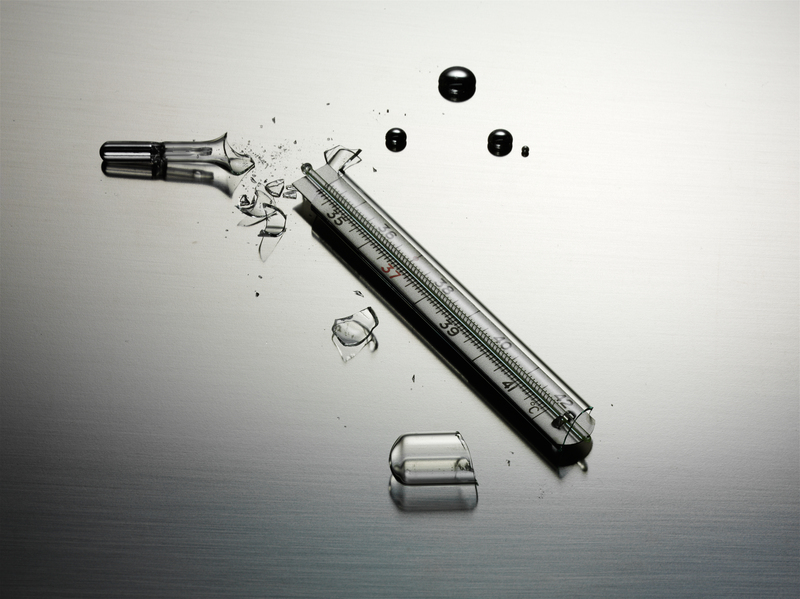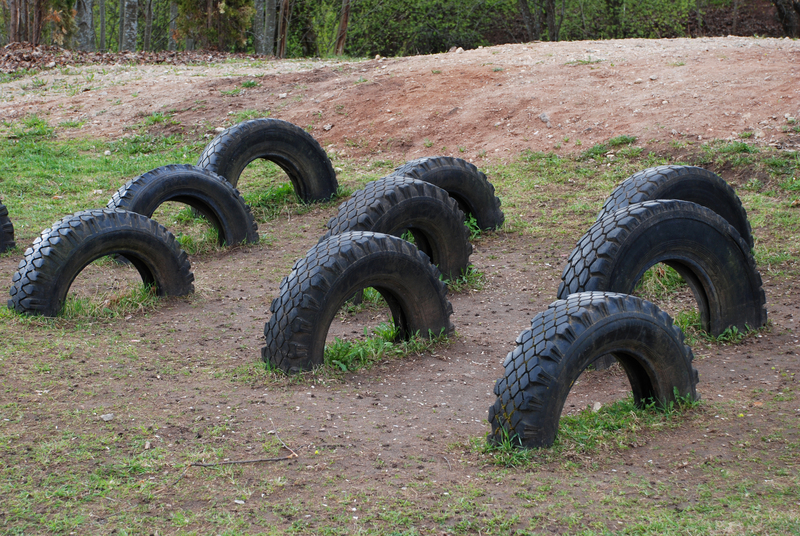Find Beauty in Broken Things by Upcycling and Renewing Everyday Objects
Have you ever looked at a cracked vase, a chipped plate, or an old sweater and felt a pang of regret at the prospect of throwing it away? What if you could give these broken things a new life and find unexpected beauty in the process? Welcome to the world of upcycling and renewing everyday objects--a creative, eco-friendly, and fulfilling way to breathe new life into the items we often overlook.
What Is Upcycling? The Art of Renewal
Upcycling is more than simply recycling materials. It's about transformation--taking something worn, broken, or obsolete, and creatively turning it into something beautiful, useful, or meaningful. Unlike recycling, which often breaks materials down into raw materials, upcycling preserves the essence of the original object while enhancing its value.
Why Should We Find Beauty in Broken Things?
- Environmental Impact: Upcycling reduces waste and carbon emissions by preventing materials from ending up in landfills.
- Creativity: It encourages ingenuity and artistic flair--no two upcycled items are ever the same.
- Emotional Value: Renewing objects with sentimental significance gives them a new story and preserves memories.
- Cost-Saving: Refurbishing objects costs less than buying something new, making upcycling an economical option.
- Sustainability: It fosters a greener, more sustainable lifestyle by extending the life of everyday items.

How to Find Beauty in Broken Things: Upcycling Ideas for Everyday Objects
Let's explore creative ways to renew and upcycle broken things you might already have at home. These inspiration and projects will help you recognize the charm and potential hiding in the overlooked and worn.
1. Bringing New Life to Broken Ceramics
Have an old mug with a chipped handle or a plate with a crack? Instead of disposing of it, try upcycling broken ceramics with these ideas:
- Mosaic Art: Break up your damaged ceramics further, and arrange the pieces into a beautiful mosaic for decorating flowerpots, stepping stones, or picture frames.
- Kintsugi: Inspired by the Japanese art of Kintsugi, repair cracks with gold enamel paint to highlight--rather than hide--the flaws, creating a one-of-a-kind decorative object.
- Repurposed Planters: Even if a bowl or cup is chipped, it can house succulents or become a quirky storage pot for pens, makeup brushes, or jewelry.
2. Reimagining Worn-Out Textiles
Clothing, towels, or bedding that's torn or frayed need not be cast aside. Try these upcycling ideas for textiles:
- Patchwork Quilts and Throws: Mix pieces of various fabrics to craft a unique quilt, pillow covers, or throws.
- Rag Rugs: Weave strips of old t-shirts, jeans, or towels into colorful, textured rugs for your home.
- Reusable Cleaning Cloths: Cut up old shirts and towels for use as rags, reducing the need for disposable paper towels.
3. Giving New Purpose to Broken Furniture
Don't abandon that old chair with a missing leg or a scratched table. With a little creativity and elbow grease, damaged furniture can become the highlight of your space.
- Chair Plant Stands: Remove the seat of a broken chair and insert a potted plant for instant garden chic.
- Drawer Organizers: Repurpose dresser drawers as under-bed storage or wall-mounted shelves.
- Paint & Stencil: Cover scratches and marks with a fresh coat of paint and creative stenciling.
4. Renewing Broken Jewelry
Jewelry often carries emotional value. When it breaks, don't part with it--find beauty in its imperfection:
- Charm Bracelets: Salvage beads and pendants from broken necklaces to create personalized charm bracelets or keychains.
- Art Collages: Use assorted jewelry bits as embellishments in collages, shadow boxes, or canvases.
- Suncatchers: Combine colorful glass beads and chains to make sparkling suncatchers for your windows.
5. Upcycling Broken Electronics and Accessories
Turn outdated technology into something new and relevant:
- Tech Art: Transform circuit boards, keys, and plugs into industrial-style wall art or sculptures.
- Storage Solutions: Stack old CD cases for innovative desk organizers, or use hard-drive platters for shiny coasters.
- Photo Frames: Tablet or phone screens that no longer work can be repurposed as unique frames for photos or art.
The Emotional Value of Renewing Everyday Objects
When you find beauty in broken things by upcycling and renewing everyday objects, you do more than just divert waste--you honor the journeys and stories behind those objects. A once-cherished mug can become a beloved pen holder. An old sweater may find new life as a cozy pillow. Even a cracked heirloom can regain value as a repaired piece of art.
Restoring, rather than discarding, brings mindfulness to our consumption habits and daily life. Each upcycled project offers a sense of accomplishment and connection to your environment. Thinking about what you can save, renew, and reimagine can foster creativity and gratitude--and help turn what once seemed like trash into newfound treasure.
Tips for Successful Upcycling and Object Renewal
- Start Small: Don't feel pressured to embark on large projects right away. Try working with objects that are meaningful or easy to handle.
- Gather Inspiration: Create an idea board with upcycling ideas from magazines, social media, and websites.
- Have the Right Tools: Basic tools like glue guns, paintbrushes, pliers, and sewing kits go a long way.
- Celebrate Imperfection: Remember, the charm of upcycled objects lies in their unique flaws and history.
- Share Your Creations: Encourage others to see the beauty in broken things by sharing your projects online or in community workshops.
Inspirational Examples: Beauty from Brokenness Around the World
The Kintsugi Tradition
As mentioned before, Kintsugi is an ancient Japanese technique of mending broken pottery with precious metals. The philosophy behind Kintsugi is simple: embrace the flaws and history of an object, turning what was broken into something more beautiful. This approach symbolizes resilience, acceptance, and the celebration of imperfection--a powerful metaphor that transcends borders.
Fashion's Circular Revolution
Major fashion houses and independent artists alike are now upcycling damaged textiles and vintage garments to create unique, sustainable fashion. From patchwork jeans made from torn denim to jewelry crafted from vintage buttons, upcycled fashion is changing attitudes about style, sustainability, and waste.
Community Upcycling Projects
In cities across the globe, community workshops and art collectives are using renewal and upcycling to empower residents. Projects include everything from recycled playground equipment to furnished public spaces, highlighting the power of collaborative creativity.
Environmental Benefits of Upcycling and Renewal
Choosing to find beauty in broken things by upcycling and renewing everyday objects supports a sustainable future for everyone. Consider these impactful eco-benefits:
- Reduces Landfill Waste: Every item creatively renewed is one less object polluting the environment.
- Conserves Resources: Upcycling uses existing materials, saves energy and reduces the need for manufacturing new goods.
- Cuts Down Carbon Footprint: Fewer products purchased new means fewer emissions from production and transportation.
- Promotes a Circular Economy: Extending the lifespan of objects fosters a loop of creativity and re-use rather than waste.

How to Begin Your Upcycling Journey
- Assess Your Home: Identify items that might seem worn or broken but have sentimental or practical value.
- Research Techniques: Explore different methods like mending, painting, repurposing, and combining objects in new ways.
- Gather Tools and Materials: Start with basic tools; expand as your skill and interest grow.
- Engage Your Community: Participate in or host upcycling events and workshops, share your experiences, and learn from others.
- Document the Process: Take before-and-after photos, write about your experiences, and celebrate each success.
Conclusion: Create, Renew, and Inspire
The next time you hold a broken object in your hands, pause before discarding it. Consider the journey it has taken, and envision what it could become. With upcycling, every crack, chip, and scratch becomes a brushstroke in a larger story--one where you are both artist and storyteller.
To find beauty in broken things by upcycling and renewing everyday objects is not just a trend--it's a lifestyle, a philosophy, and a tribute to creativity in the face of imperfection. By embracing this mindset, you contribute to a more sustainable world, celebrate the art of repair, and transform your own environment into a gallery of imaginative, meaningful artifacts.
So, next time you come across something broken, look a little closer--you might just find beauty waiting to be revealed.